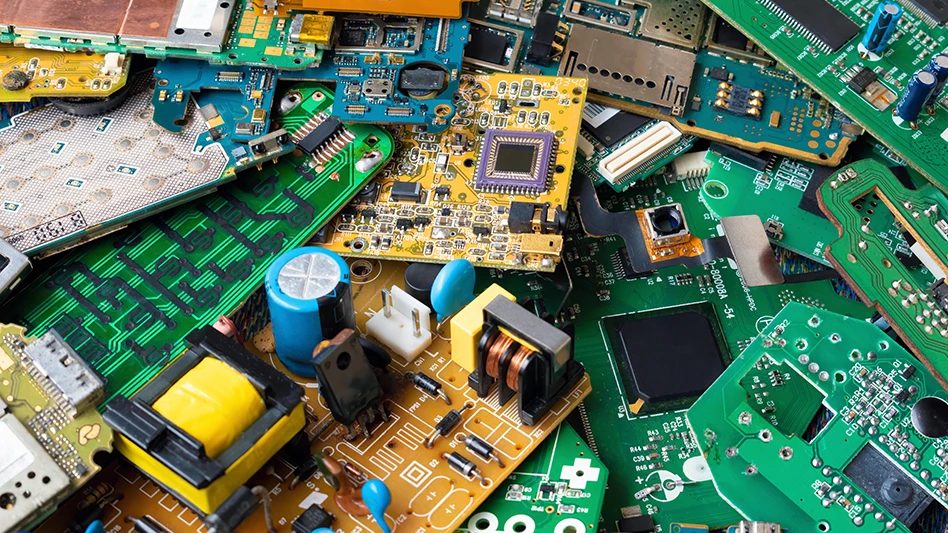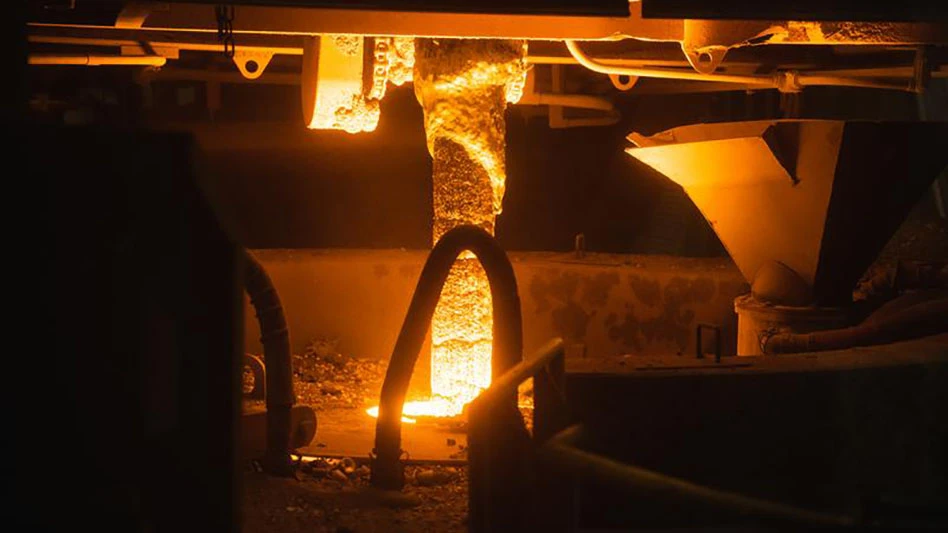The United States rail system is critical to the movement of scrap metal and finished steel, as it connects a vast network of scrap metal yards, steel mills and foundries. The good news for the scrap metal industry is that demand for materials remains strong; however, one significant problem still persists – dealers can’t always get gondola cars to move the scrap when it needs to go.
At the beginning of the year, the Association of American Railroads, Washington, approved a policy that allows individual railroads to maintain control over plain gondola cars – the type of cars used for transporting scrap metal. In the past, the cars were free running from railroad line to railroad line, and assigned by the local railroad branch office that happened to have the cars at the time, regardless of which railroad actually owned the cars. The true owners often did not get their cars back for months at a time.
Now, as the result of the AAR action, the railroad that owns the gondola cars can assign cars to its own customers, requiring the gondolas be returned to their home railroad after each trip or rental period. But with the gondola control measure in place for nearly a year, has the firm control really freed more gondolas for scrap metal shipments? Railroad executives are saying “yes” for their customers, but scrap dealers aren’t so sure.
GONDOLAS GALORE?
One of the reasons the gondola control issue passed was to give railroads a better feel for how many gondolas they actually needed to support their customers and provide an impetus for investment in more cars, if needed. “It is the best advantage for us because we have better control and can justify new investments,” says John Bergene, director of communications for CP Rail System/Soo Line Railroad, Minneapolis.
According to AAR, there are currently about 156,600 gondolas industry wide. Of that, roughly 92,300 are owned by Class I railroads (those railroads with more than $260 million in revenues per year); 15,000 by other railroads; and 49,300 by car companies and shippers.
“We currently have 7,000 gondolas, 2,000 of which are 70-ton, and the rest are 100-ton,” says Jim Kearney, manager of equipment marketing, Norfolk Southern, Roanoke, Va. “But I do not see that we have to invest in any more to satisfy our customers because each gondola is only making about one trip per month, and sometimes even less than that. In 1994, we thought that we had a shortage of gondolas, but when the AAR ruling passed and all of our cars were returned, we found out that we really did not have a shortage of cars for our customers. We did find, however, that the 100-ton gondolas were in greater demand than the 70-ton ones.”
Kearney says that because of that low usage rate, Norfolk Southern has had to increase its rates to make that segment more profitable. “That’s one step we are taking,” he says. “The other step is to look at our own organization to see where the holdups are at our end and to be more efficient.”
Overall, Kearney says that the situation today with the AAR ruling in place is working well. “We are loading more on our own cars,” he says, “and I think that scrap dealers have been very satisfied with our performance and equipment.”
The David J. Joseph Co., Cincinnati, a scrap processor that also owns its own gondola fleet of about 1,200 cars, supported the control ruling last January. “We were in favor of the control issue from the start,” says Tom Pellington, director of transportation for The Joseph Co. “The old system basically allowed one railroad to capitalize from another railroad’s investment. A gondola could be shipped out to Nebraska from Ohio on one railroad and not be returned for months, for example. Now, there are two options: source a load on a gondola that has the originating railroad somewhere in the routing; or send the gondola back empty.”
And are many cars coming back empty? “There are going to be more empty cars than before, but I do not see that happening on a large scale,” says Pellington. “With the control and number of customers out there, I think the gondolas are being fully utilized, so demand is strong right now. In cases where there may be an empty gondola, side deals are being made.”
Even so, Dennis Wilmot, transportation manager for Luria Bros., Cleveland, says there simply have to be more empty gondolas out there on the tracks because of the decision. “If a gondola terminates on a foreign line, and not reassigned or approved for loading, it is returned empty,” he says. “And I think that is happening more now.”
Pellington says that now that the control issue has taken effect and has worked for about a year, some railroads have found that they cannot meet the demands of their scrap metal customers because investments were not made in gondola rolling stock. “We knew there were going to be some pains in the industry when this ruling was implemented,” he says.
SUPPLY AND DEMAND
Despite the January ruling, most people in the scrap metal and rail industry agree that the major forces of supply and demand still dictate gondola availability and freight prices.
“It all comes down to supply and demand,” says Seymour Padnos, CEO of Louis Padnos Iron & Metal Co., Holland, Mich., “and it has always been that way. As demand for scrap eases, more cars become available and the railroads say, ‘Hey, look at all these gondolas sitting around here.’”
“Gondola availability is okay, but I think it is getting short again,” says Ron Havrilla, vice president of corporate transportation for Columbia Iron & Metal Co., Cleveland, and chair of the Institute of Scrap Recycling Industries’ transportation committee. “Not a crisis, but maybe some need for concern. In certain areas, such as in Philadelphia, there are shortages. But I think that is because there are steel slabs coming in from Europe tying up gondolas.”
Padnos, whose company has four locations, says he is seeing a shortage of cars. “One railroad that we use just does not have the gondola car capacity and cannot produce them right away when we need them,” he says.
The supply-demand forces are affecting freight rates, too. Reports from the field indicate that because of the high demand for scrap metal, and the need for gondolas, rates in some cases have jumped as much as 15 percent to 20 percent recently.
“The problem right now is that the rates keep going up, but the bigger problem is that rates are being changed without any notice or lead time,” says Havrilla. “Before, railroads had to give you a 20-day notice if rates were changing, now with deregulation it can happen overnight, and you do not know until it is too late. There is just not enough lead time.”
Havrilla says that part of ISRI’s focus is to address this problem and get some sort of ground rule in place with all the railroads concerning rate changes. “We would like a contract rate and know what that rate is going to be day in and day out without it fluctuating wildly,” he continues.
Padnos agrees that an effort has to be made in this area. “If the freight rate changes within a month’s time, and you are buying and selling in a 30-day window, then that rate increase can really hurt,” he says.
“There is no question rates have gone up, and that will continue,” says Jim Titsworth, product manager for scrap metal at Burlington Northern Santa Fe Corp., Fort Worth, Texas. “Increased rates are needed for us to operate profitably. It allows us to manage the fleet properly and provide for future investments. We would have never invested during the free-running system. A gondola can cost about $50,000, and how could you invest when you did not have control over your cars and you were getting $10 a day for a user fee? The economic performance of scrap gondolas is very poor, so we need to improve that to reinvest.
“Also, we, as an industry, cannot continue to use gondolas as poorly as we have,” he continues. “Sure, rates can be raised on a day’s notice, but we have to do what makes good business sense. I am not going to do something that is going to alienate my customers or hurt business, so there is a balance. It boils down to finding a good partner.”
TAKING CONTROL
The issue of gondola control appears to have helped some railroads and their scrap metal customers, and hurt others. Those that had the large numbers of gondolas are the ones that came out ahead, say scrap metal dealers.
“I think you have to look at it on a carrier by carrier basis,” says Wilmot. “The larger ones that made the investment in gondolas and have a big enough fleet are doing well and the ruling definitely helped them. Those who did not make the investment, and who have small fleets are struggling, and have an uncertain future. They are going to have to invest in cars, and the ruling will force that issue.”
The ruling did not hurt carriers in the West as much as some thought it would, he adds, and some in the East were hurt more than expected and are still struggling with regional shortages.
“Overall, I think it is very difficult to determine the effect the ruling has had on the availability of gondolas, because of other things that have happened in the industry such as the recent merger of Union Pacific and Chicago & Northwestern railroads,” says Wilmot. “It created some disruption because cars were available, but without power to move them; or power was available, but no cars. And that is a very heavy scrap metal carrier system.”
Union Pacific, which has absorbed all of C&NW’s assets, is also looking to merge with another Class I railroad, Southern Pacific. If that happens, it will become the largest railroad in the U.S. with revenues of about $9 billion. Another recent merger of two more Class I’s, Burlington Northern and the Atchison, Topeka and Santa Fe Railway, created the current largest U.S. railroad with revenues of more than $7.6 billion and a 23 percent share of total freight revenue. Combined, the new company has 2,400 gondolas.
“Because of our merger, I can’t say what future investments we will make in gondolas,” says Mike Martin with Burlington Northern Santa Fe Corp. “We are still ironing out procedures and the consolidation of the two rail companies.
“I will say that the gondola ruling has helped us,” continues Martin. “Those companies that were benefitting from the free movement of gondolas are the ones complaining. Sure, we have empty cars coming back, but there is a balance. That has to happen so that we can get the cars to our customers and serve them, not someone else’s customers.”
Titsworth says that there has been a “settling down” effect since the ruling. “Before the ruling, gondola availability would go in uncontrollable waves,” he says. “Now the wave has evened out. There are still times, however, when there are more customers than cars, but that is happening less often.
“The benefit is that now we can manage the cars,” he continues, “and that brings with it tremendous efficiencies. Cars are now allocated in a wise way. I can now take gonds and make loads in only a short distance. In the past, cars could be coming into an area, as empty ones were leaving to go somewhere else, and it did not make any sense.
“BNSF has more demand right now than we have gondolas,” continues Titsworth. “Now we need to ask ourselves, ‘how much more do we need?’ The scrap metal market is definitely growing.”
Because there are still some gondola shortages, Padnos says that a few scrap dealers are turning to ownership and leasing of cars. “The David J. Joseph Co. bought their own cars, and others are doing it, too,” he says. “These cars are coming from companies outside the railroads that have gondolas, and all the owner does is negotiate a hauling fee. The benefit is that the scrap dealer can get the car into a rotation with a mill.”
Another part of the control issue was that gondola car owners could levy fines on those that did not return cars on time. “We haven’t heard much about fines lately,” says Havrilla. “Every now and then I’ll see a Norfolk Southern car on a Conrail line or vise versa, but you don’t know what the agreement is for that situation.”
Representatives from most of the Class I railroads indicate that there have not been any extraordinary fines because of the ruling.
“We are not levying more fines,” says Wayne Efford, director of metal sales and marketing for CSXT, Jacksonville, Fla. “Instead, we are working with the railroad or customer in every situation to resolve a gondola movement issue.”
GETTING A GOND
Havrilla sees the benefit of a centralized system for issuing gondolas. “Before, each region had a branch office, and cars were being assigned based on personal relationships, not on need or a first-come basis,” he says. “Now with the centralized system, there is no favoritism. Everyone is treated the same. For some railroads, you can’t even call anymore, your request has to be faxed. Everything is centralized and computerized – it has to be that way.”
Wilmot says that the new ruling has not made it more complex for customers to get gondolas, just that dealers are now limited in what cars they can use and that there’s more effort on everyone’s part to get the right cars and the shipment where it has to go.
Efford does not see much change from his end, either. “CSXT has not identified any drawbacks to control,” he says. “The overall process that our customers follow to order cars has not changed as a result of controllability. Some procedural changes that have occurred were communicated proactively to our customers.”
FUTURE CHALLENGES
“For the future, the biggest thing I see is that shippers will have fewer and fewer options down the road, and will be more captive to a system with fewer players,” says Pellington. “Competition access has to be at a viable level. Look at what has happened in Canada. There are basically two railroads and that is it.”
Another problem that has to be addressed are the allegations that steel mills are not turning around gondola cars as fast as they could. “Mills are still sitting on gondolas,” says Havrilla. “It seems the mills are exempt from the control rule.”
“The mills unload when it is advantageous to them,” agrees Padnos. “When the market goes down and scrap prices fall, the mills want scrap right away, and if you can’t get it there and get the cars you need, then your order is canceled. It’s a hell of a way to operate.”
Even some railroad officials agree with this assessment. “Steel mill usage of gondolas has traditionally been a problem,” says Titsworth, “and there is room for improvement there for originator, destination and routing performance.”
But railroads are certainly not intentionally encouraging mills to drag their feet returning gondolas, Efford points out.
“Why would any railroad, or any other business for that matter, want to encourage idle assets?” he says. “CSXT has been working closely with the mills to minimize these days, and we are starting to see some positive results, but it remains a challenge. Most mills understand that idle days spent in the mill translate to decreased empty car supply to their scrap shippers. These cars are very expensive and we will explore all measures available to improve their utilization.”
Bob Webster, senior purchasing agent for USX Corp., Pittsburgh, agrees with Efford, saying his company moves the scrap and gondolas as fast as it can. “First, we do not own any of the short line railroads, nor do we have any controlling interest in them,” he says. “Second, we do not operate in a way that encourages demurrage. We are doing the best we can to get the gondolas going.”
Webster does admit that USX did a recent study with one major railroad that revealed a need for slightly faster turnaround times of railcars in some cases, but he says his company’s operations are not out of the ordinary for mills.
Still another concern involves the folding of the Interstate Commerce Commission in Washington. Although many in the railroad industry are saying “good riddance” to the ICC because they feel the organization has outlived its original intention, Havrilla has some concerns. “There are some important issues that affect scrap dealers that need to continue to be addressed,” he says, “such as mergers, safety, reciprocal switching, credit days and railcar cleaning. There are transportation policy concerns that we do not want to fall through the cracks.”
Plans are for Congress to transfer some of ICC functions to the Department of Transportation by the end of this year, although what those functions will be is not known.
As for investments by the railroads, some are taking a wait-and-see attitude, as others are looking to enhance gondola usage even further. CSXT is one company that is exploring new options. The company owns 7,500 gondolas and recently made more than an $80 million investment in rolling stock.
“Innovative railcars and unit train movements are just a few areas that CSXT is currently studying,” says Efford. “We view scrap as a long-term growth market.”
That’s good news for CSXT customers, but Havrilla’s concern is that, overall, the railroads do not seem to be committed to buying or refurbishing new gondolas and – most importantly – many scrap processors still have trouble getting cars to move scrap.
With new steel mill capacity coming on line from mills in Indiana, Iowa, Ohio and Arizona, and the need for even more scrap metal shipments, it seems that the nation’s rail system will surely be put to the task to deliver in the near future.

Explore the December 1995 Issue
Check out more from this issue and find your next story to read.
Latest from Recycling Today
- AF&PA releases 2023 paper recycling rate, unveils new methodology
- ARA names new president
- Aurubis invests in Lünen, Germany, site
- ILA, USMX negotiations break down
- Van Dyk hires plastics industry vet to expand footprint in PRF sector
- Li-Cycle closes $475M loan with DOE
- Report highlights consumer knowledge gaps in lithium battery recycling
- AMP names CEO





